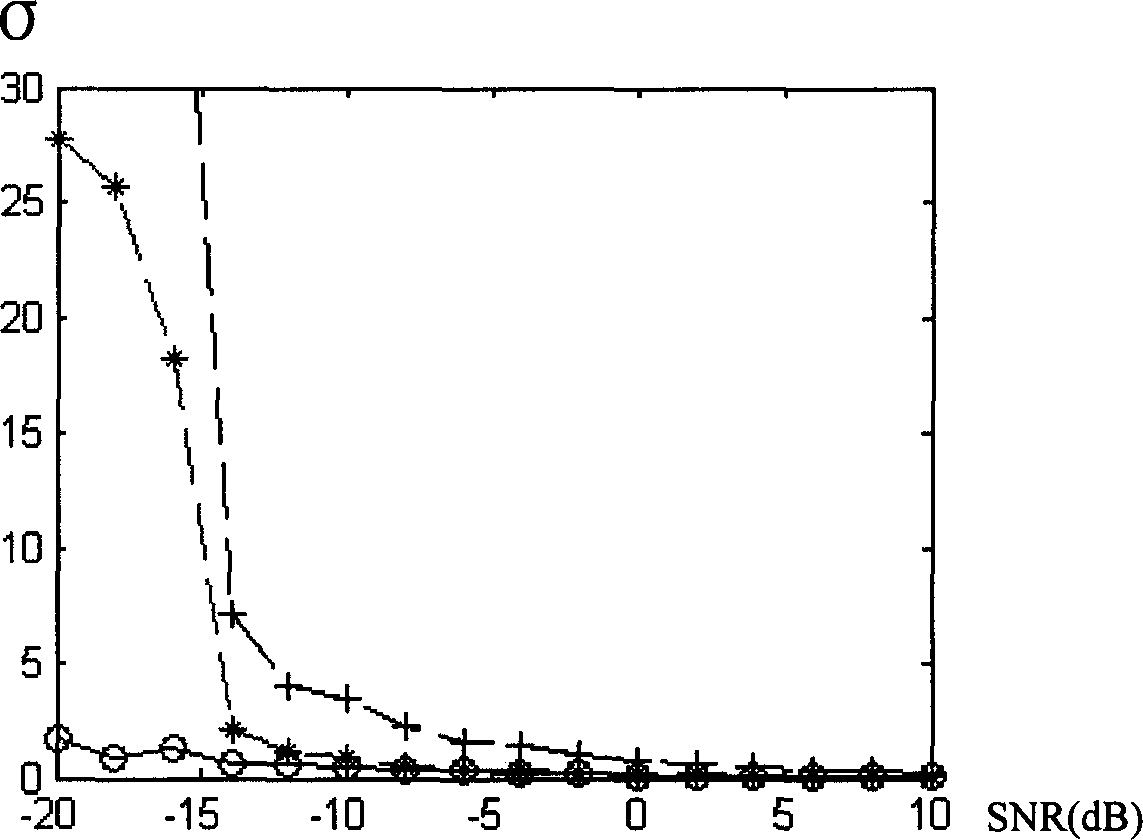Space radiation source DOA estimation method based on non-orthogonal decomposition
An angle of arrival, non-orthogonal technology, applied to direction finders using radio waves, radio transmission systems, electrical components, etc., can solve system applications such as communication, radar, sonar, signal-to-noise ratio, array error Issues such as strict environmental requirements related to information sources, etc., to achieve the effect of high estimation accuracy, low related environmental requirements, and reduced errors
- Summary
- Abstract
- Description
- Claims
- Application Information
AI Technical Summary
Problems solved by technology
Method used
Image
Examples
Embodiment 1
[0025] A method for estimating the angle of arrival of a space radiation source based on non-orthogonal decomposition, its steps include forming an antenna array with M antenna elements distributed in space to receive the signal of a space radiation source, collecting the data vector X on the antenna element, and then In the digital processing module, the data vector collected is processed, and the angle of arrival of the space radiation source signal is estimated and output. It is characterized in that: the specific method of processing the data collected by the antenna array element is:
[0026] a. Construct a non-orthogonal overcomplete atomic vector library G:
[0027] The formula for the atomic vector g is: g = e j ω 0 t 1 · ...
Embodiment 2
[0048] This embodiment is basically the same as Embodiment 1, except that M=10 in this example, that is, a uniform antenna array is composed of 10 antenna elements, the distance between the elements is d=0.04m, and signals from space radiation sources are received. A space radiation source emits a center frequency f 0 =3.5GHz is ω 0 =7π*10 9 The signal incident on the antenna array is at an angle of 10.43 degrees; that is, the angle of arrival at the antenna array is 10.43 degrees.
[0049] At this time, the formula for calculating the non-orthogonal overcomplete atomic vector g becomes:
[0050] g = e j ( 6 π * 10 9 t ) 1 exp ...
PUM
 Login to View More
Login to View More Abstract
Description
Claims
Application Information
 Login to View More
Login to View More - R&D
- Intellectual Property
- Life Sciences
- Materials
- Tech Scout
- Unparalleled Data Quality
- Higher Quality Content
- 60% Fewer Hallucinations
Browse by: Latest US Patents, China's latest patents, Technical Efficacy Thesaurus, Application Domain, Technology Topic, Popular Technical Reports.
© 2025 PatSnap. All rights reserved.Legal|Privacy policy|Modern Slavery Act Transparency Statement|Sitemap|About US| Contact US: help@patsnap.com



